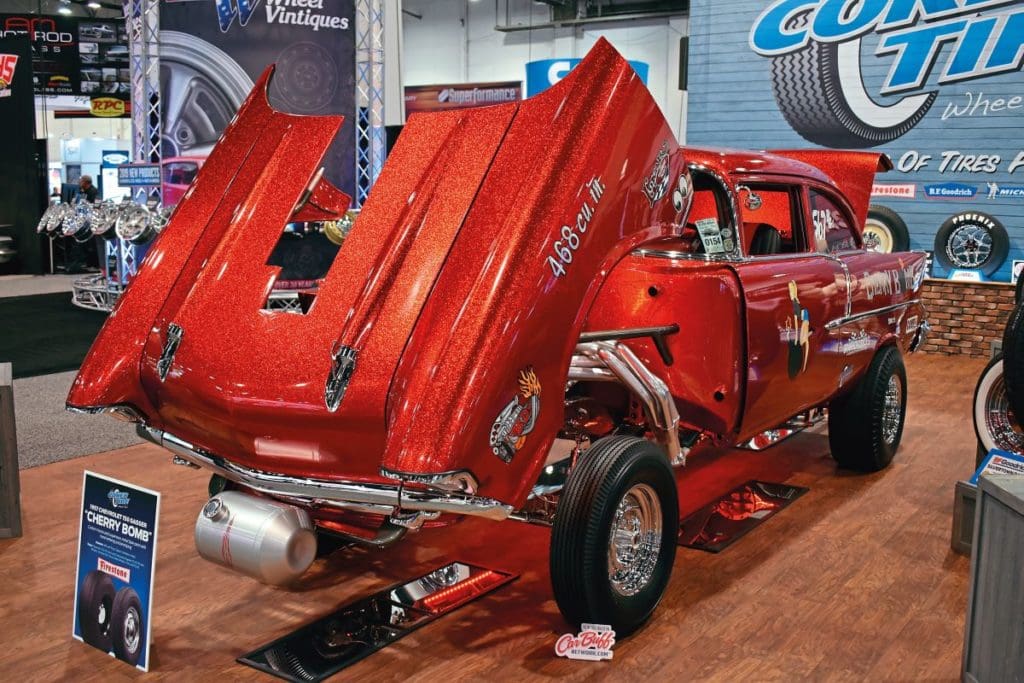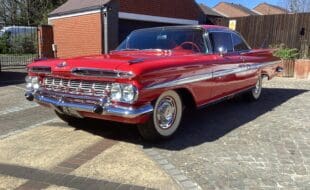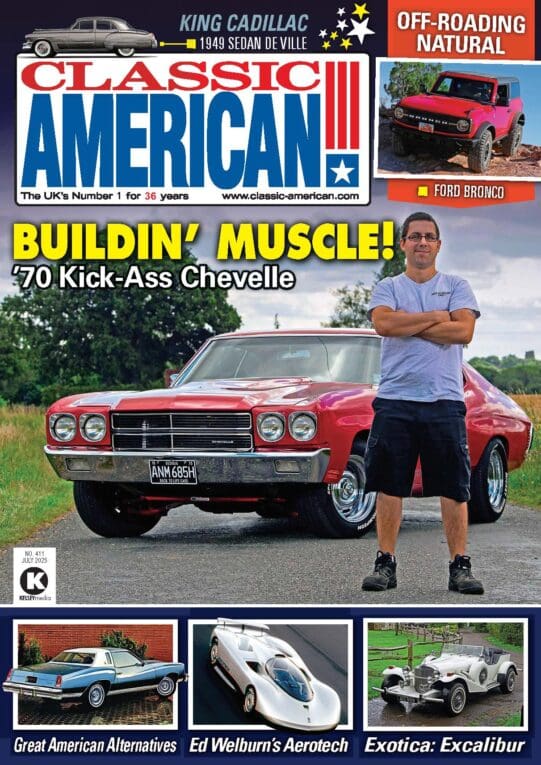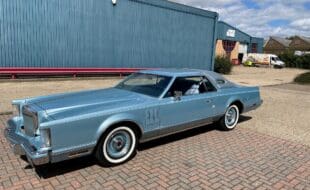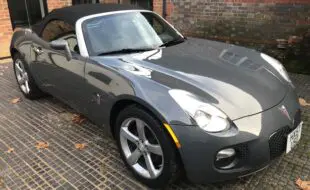It took two years to turn a ’57 Chevy 210 rolling shell into a dazzling, 700bhp, flip-front gasser. We got the inside story of this head-turning build that’s become a show favourite right across the US…
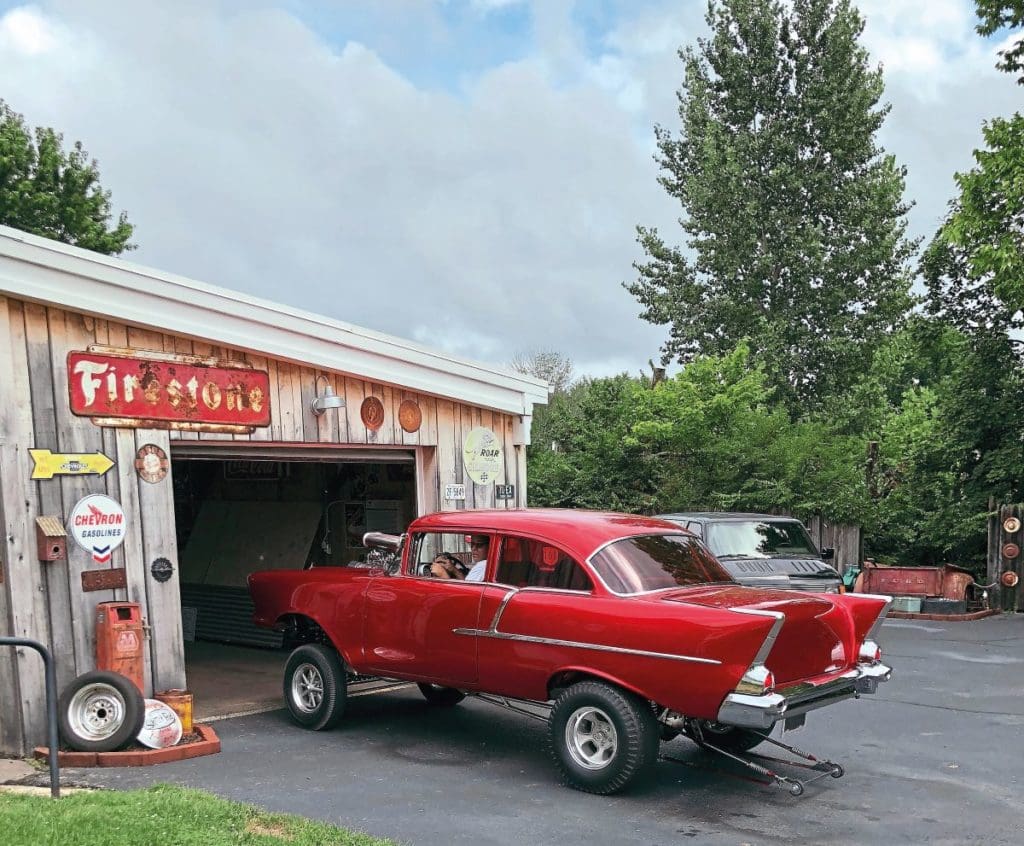
Words: Graham Heeps Photography: Graham Heeps and Jeff & Tracy Spear
In their Sixties heyday, jacked-up gassers were the fastest stock-looking drag cars around. More than 50 years later these spectacular racers, based on cars from Willys, Chevrolet, Ford and more, still capture the imagination of enthusiasts and race fans around the globe. When Jeff and Tracy Spear of Hampton, Iowa, took their newly restored, stock ’55 Chevy to the Tri-Five Nationals, Jeff was captivated by the look and sound of the gassers at the huge event in Bowling Green, Kentucky. Says Jeff: “I told my wife, we’ve got to have one of those…”
Enjoy more Classic American reading in the monthly magazine.
Click here to subscribe & save.
The Spears’ incredible ’57 Chevy 210 gasser, named Cherry Bomb by Tracy, started life as a rolling shell that Jeff acquired in 2015 with just 27,000 miles on the clock. It was transformed over two years by Roy’s Paint & Performance in Plymouth, Iowa – the same small shop run by Roy and Mary Christeson that had built the Spears’ ’55.
“To begin with there was no motor or tranny,” Jeff recalls. “It was an ex-drag car with a ’62 Pontiac/Olds rear end, but it was not a straight-axle car. We told Roy we wanted to build it into a gasser – high up in the air. It had to be red with metal-flake paint. It had to have a blown, big-block motor. And it had to have a tilt front end.”
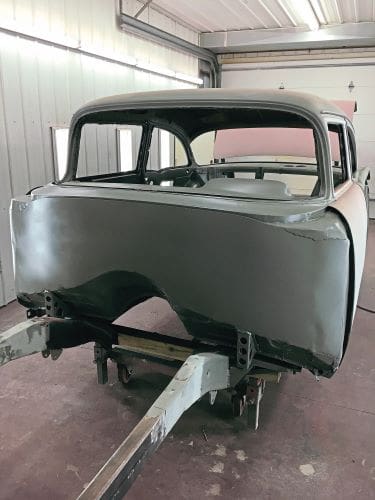
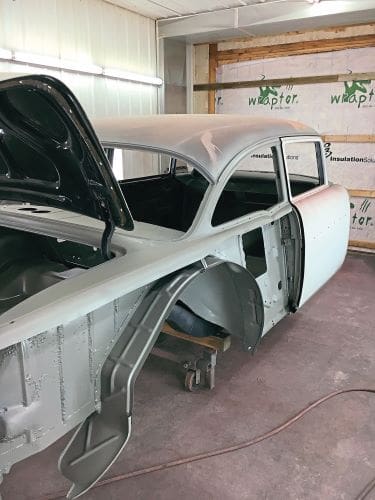
Flip-front body
The $200,000 build started from scratch, despite the shell’s low mileage. New sheet metal went in, in the form of new quarter panels and a floor from Woody’s Hot Rodz in Indiana. The most extensive changes were to the front. Out went the conventional hinged hood arrangement, to be replaced by a one-piece, all-steel, tilting front end. It incorporates the original hood and is welded together on its own custom framework. It raises and lowers via a system of electric actuators, based around a camper jack in the centre that transfers to the front-end frame. Rollers take the load as the hood raises or lowers.
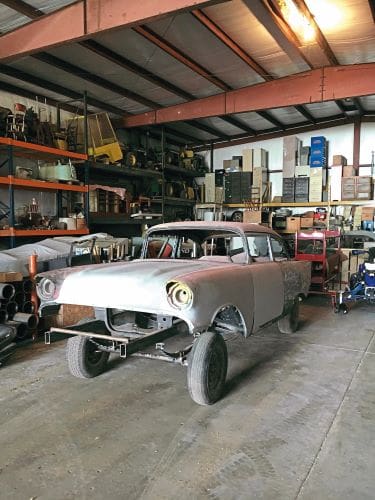
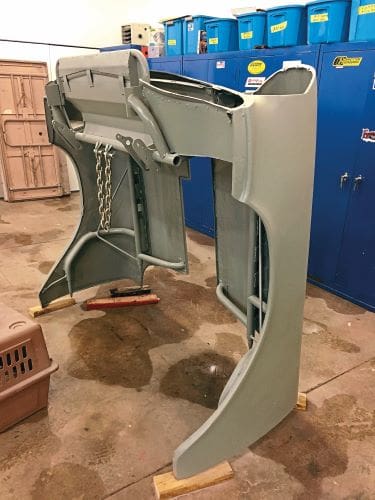
As the hood closes, four aluminium pins slide into bushings in the firewall and pull everything into alignment to ensure that the gaps are right. The firewall itself has been smoothed out and decluttered by relocating the power brake system to under the dash. The incredible, remote-controlled flip-front is the car’s standout feature and was the single most headache-inducing part of the build, according to Jeff, who worked with Roy to design, build and tweak the system.
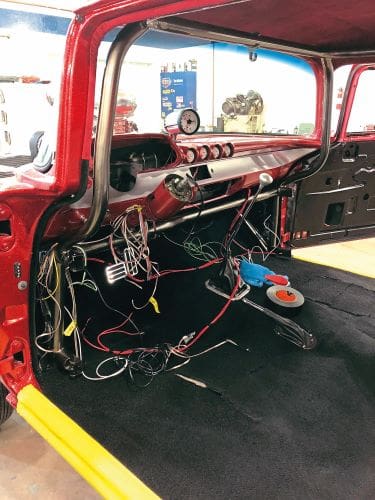
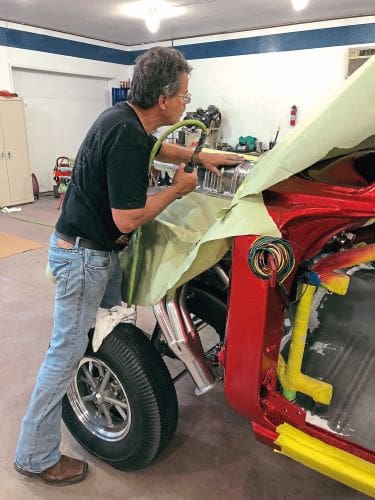
“It works great, but there was a lot of trial and error and a lot of fitting,” he explains, “especially getting the diameter of the rollers right, so that as the hood came back the pins were correctly aligned. The mechanism had to be adjusted after painting, too, because the paint added a lot of weight to the hood. We also added a stainless plate on the top of the rail because otherwise the roller would wreck the paint going back and forth. And once you added that, then you had to make the roller smaller, otherwise the hood was up too high for the pins to align.
“The end result is the unique part of the car,” Jeff continues. “When it’s shut, we have the hood gap all painted in and a filler behind the blower, so there are no cuts in the fenders, no hood pins, no side pins, nothing to tell you that it’s a flip-front. We’ve never seen another one like it.”
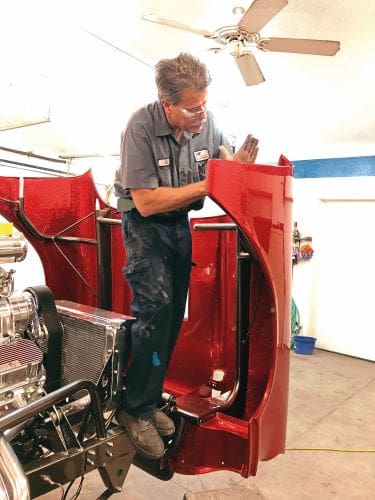
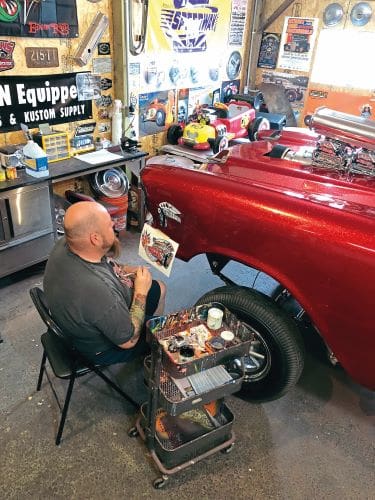
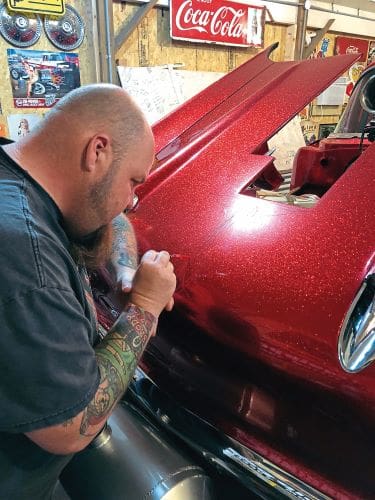
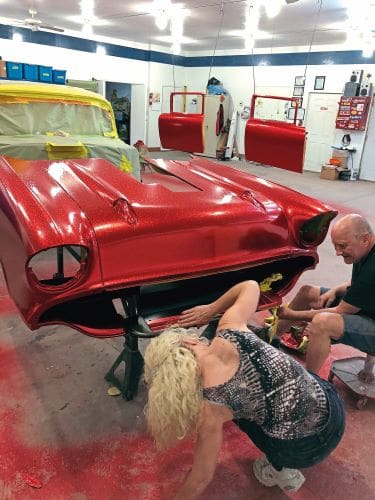
Big-block motor
With the hood open, LEDs illuminate the engine bay, which houses a solid-mounted, 454cu in Chevrolet big block from a 1973 Monte Carlo, bored out to 468cu in. The motor was built by Grawmondbecks Competition Engines of Mason City, Iowa, and incorporates roller camshafts, H-beam rods, a steel crank, Mallory ignition and an electric water pump. Its ample power – the V8 has been dyno’d at 700bhp – is delivered by an 871 BDS blower, two quick-fuel 750 Holleys and nitrous injection.
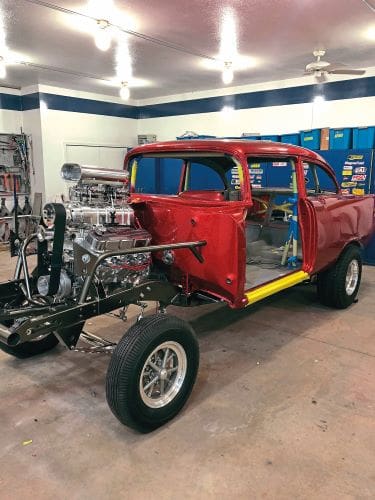
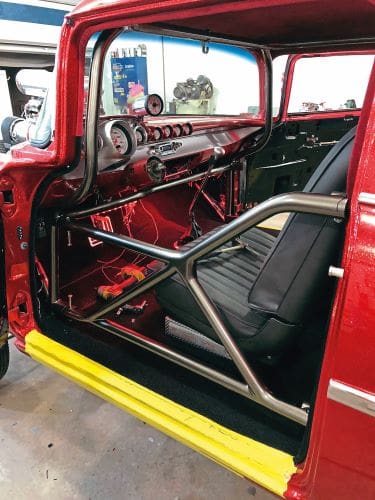
roll cage to make access easier.
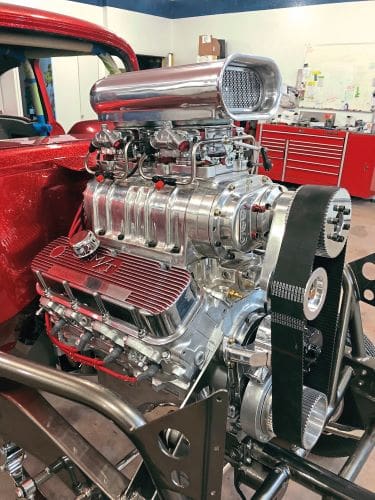
quick-fuel 750 Holleys and nitrous
injection system.
“We still have cast-iron heads,” Jeff notes. “I wanted it to look Sixties, so I didn’t want the aluminium ones. And I wanted to be able to drive it, so we only put four pounds of boost through it. We don’t race it, but I like to light ’em up at the stop light in town!” Jeff bought the Turbo 400 transmission from a friend who’d raced it in a ’69 Chevelle. The unit was rebuilt, and a Gear Vendors overdrive added.
The 9.3-inch Pontiac/Olds rear end that came with the car is a gasser staple. It was also rebuilt, this time with Fabcraft internals. The original rear leaf springs were replaced by coil-overs and hand-built ladder bars, one of several contributions that Jeff, who runs a machining company with Tracy, made to the rebuild. A Speedway front end completed the high-riding gasser look. From front to rear, everything from the frame down is chromed. With so much visible under the car, Jeff and Roy knew that the finish had to be perfect: the diff was sent back three times to a supplier to be ground smoother, until the desired look was achieved.
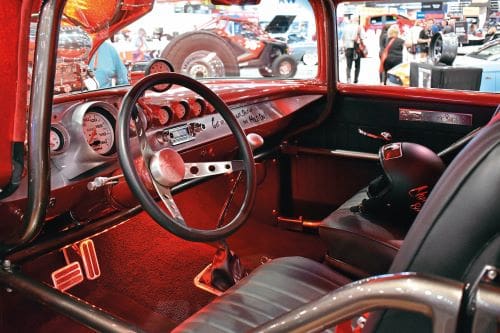
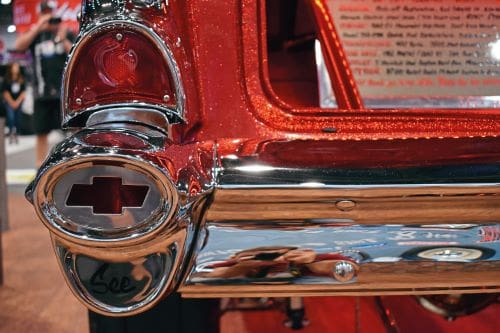
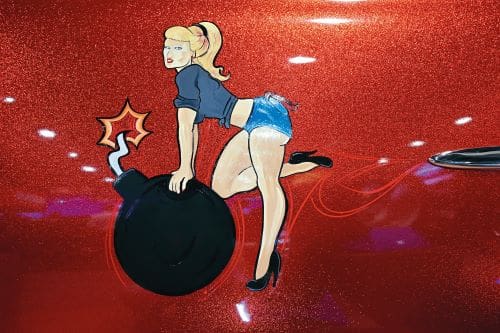
Finishing touches
The revised rear suspension left space for the all-aluminium, 34-gallon fuel tanks, which provide helpful capacity when away attending shows. The stock ’57’s distinctive filler in the tail-light is retained. The interior was built around a 14-point, custom-made roll cage. There are even doors in the cage so that you don’t have to climb over it when getting into the car. Four additional AutoMeter Phantom gauges have been neatly frenched into the centre of the dashboard. Mike’s Upholstery in Waterloo, Iowa, did the low-back, ’67 GTO bucket seats.
Jeff’s machining expertise is in evidence inside the car, too: in the Cherry Bomb engravings on the door trims, on the tachometer bracket and in the centre of the steering wheel. As on the radiator, valve covers and elsewhere in the car, these engravings were done from renderings sent to him by the car’s pinstriper, Joey ‘Taz’ Henschen of The Sketch Pad, before the car was painted. That enabled a tight schedule to be met to get the car to the Tri-Five Nationals in August 2018. The signature red finish, the depth of which has to be seen to be believed, was achieved using a maroon base coat from House of Kolor and an incredible 12lb (5.4kg) of red metal-flake. Roy’s Paint & Performance then applied 16 clear coats to bury the flake.
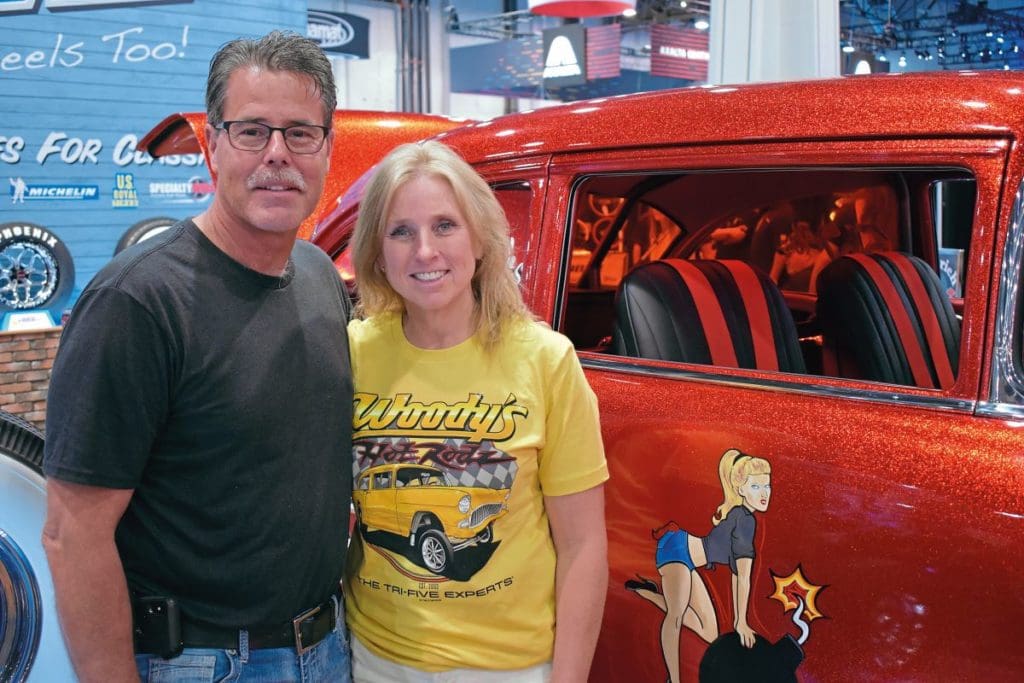
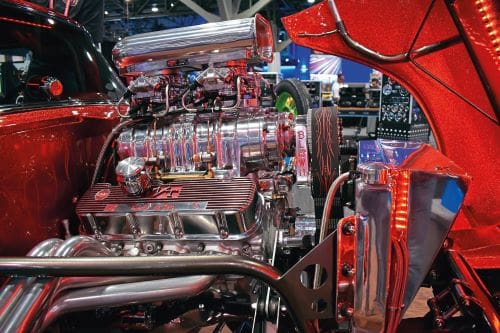
The use of ’55 Chevy side chrome, which drops a couple of inches lower than the ’57’s, left more room for lettering when the car was delivered to Henschen in Ohio. He completed the pinstriping, artwork and other details in just nine days and even painted Cherry Bomb on Tracy’s high-heeled shoes, to be worn to the dance at Nationals the following week. The Spears have shown Cherry Bomb continuously since its completion, including two appearances at SEMA in Las Vegas, and the invitations keep on coming. However, this year they also plan to take more time to enjoy driving this beautiful, sparkling, unique Chevy gasser – and are already looking forward to the completion of their next project, a ’66 Mustang.
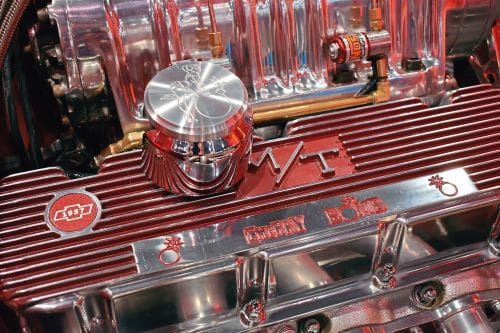
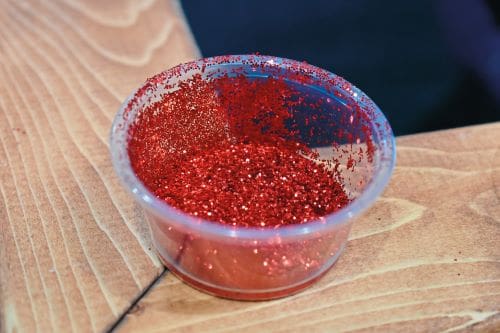
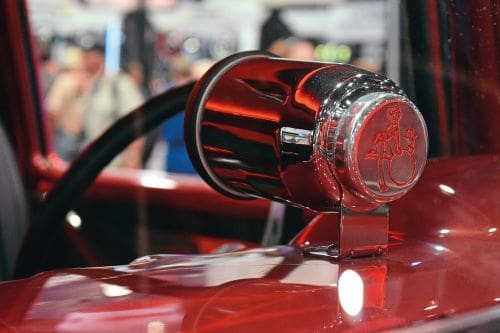
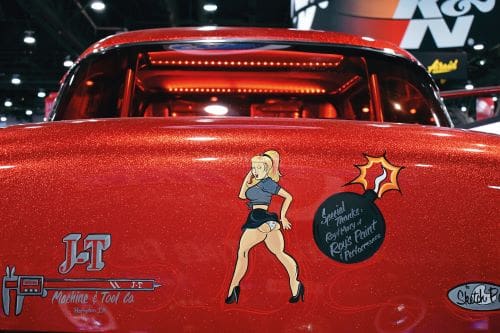
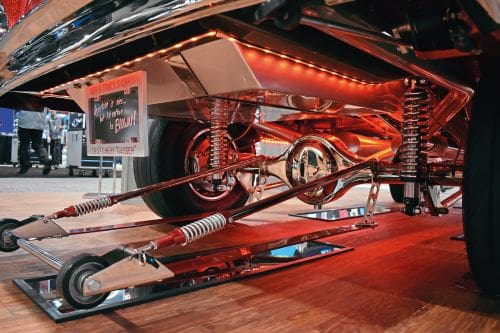
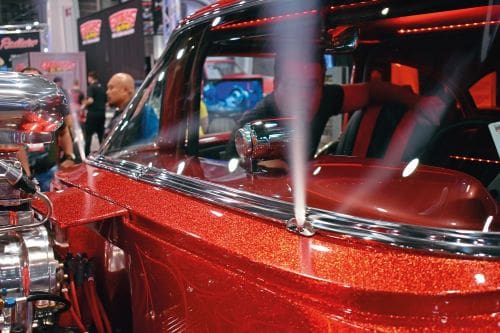
Wired up
Cherry Bomb’s lighting setup is full of eye-catching details, such as red halos around the headlights. At the rear, Jeff Spear made aluminium-alloy Chevy bowtie cut-outs for where the reversing lights would normally sit at each end of the bumper. They light up to reveal discreet ‘1957’ lettering in red. However, the many decorative lights and the power-hungry hood have proved a drain on the car’s battery, especially during its numerous show appearances over the past 18 months.
“We had some electrical issues when we first built the car,” Jeff admits. “The battery kept going dead because of all the lighting and the electric front end, so we put in a separate battery to power that. But even that would go down after a long weekend so now we have a motorhome inverter and a big marine battery in the trunk (neatly hidden behind a display board). All the original battery has to do now is start the car.”
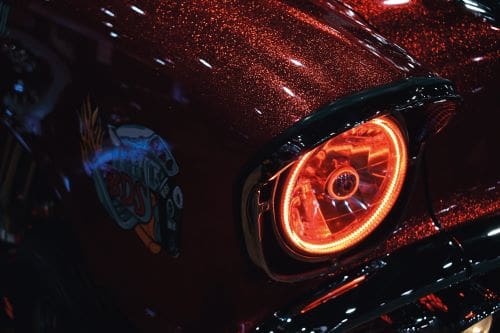
Tech spec
Engine: 468cu in big-block Chevy V8, 700bhp
Exhaust: Doug’s headers (Fenderwell style) with electric cut-outs. 3in stainless-steel pipe, ceramic coated. MagnaFlow silencers
Steering column: Ididit
Brakes: Wildwood discs
Wheels: Wheel Vintiques chrome reverse
Tyres: Firestone via Coker Tire
Chrome: Danchuk
Weight: 4200lb (1900kg)
Cherry Bomb’s glass is red-tinted. The electric windows are operated remotely, but are inoperable when the door is open as there are no wires into the doors from the body – contact switches are used instead.
